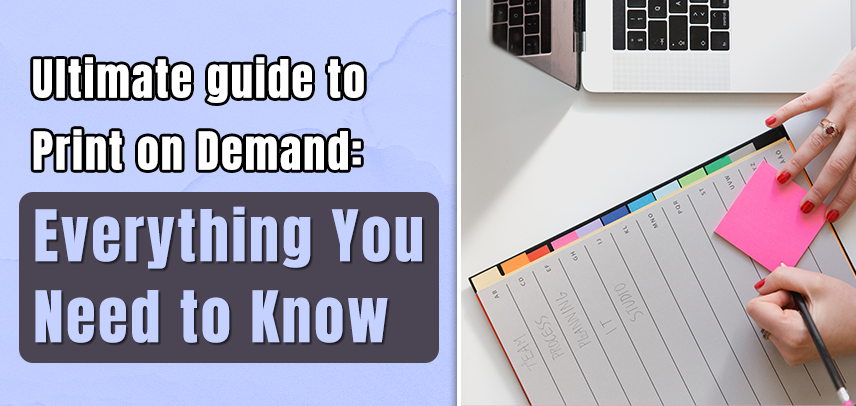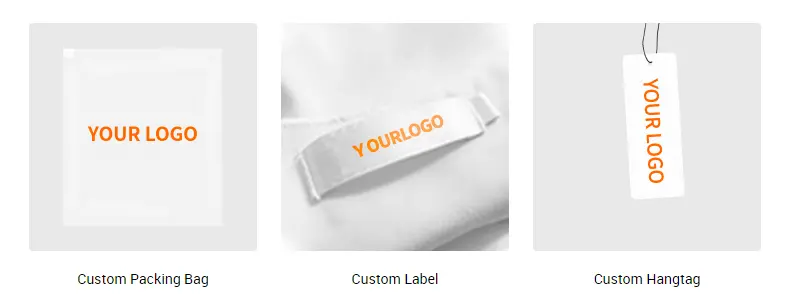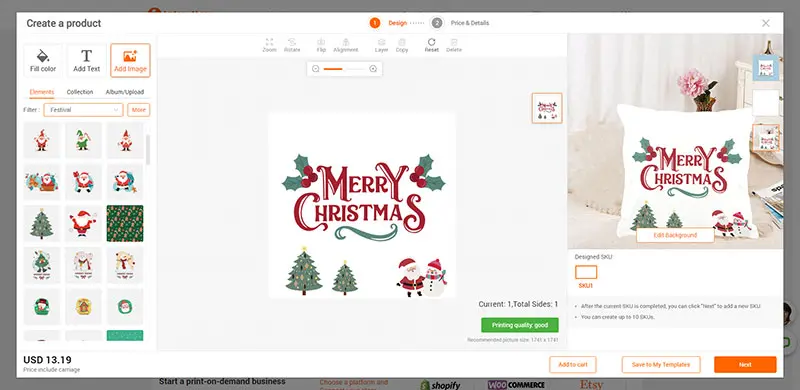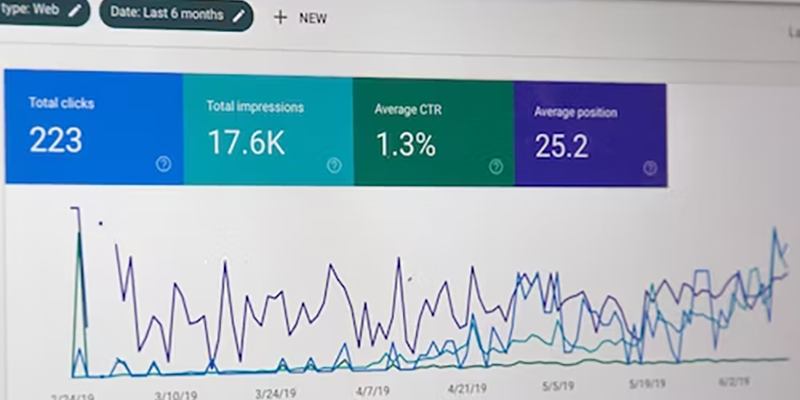
Ultimate Guide to Print on Demand: Everything You Need to Know
Print on demand allows you to print customized products as orders come in, rather than keeping pre-printed inventory. With print on demand, you can offer customized t-shirts, mugs, phone cases, and other products branded with your own unique designs. When a customer places an order, their item gets printed and shipped directly to them.
Print on demand opens up easy product customization without the risk of getting stuck with excess inventory. This guide covers everything you need to leverage print on demand to sell your own customized branded merchandise.
What Is Print on Demand?
Print on demand allows you to fulfill orders for customized products on demand as they are placed. With traditional manufacturing, you must order large batches of inventory upfront to keep unit costs down. But with print on demand, you can offer endless customization without taking on that financial risk and storage burden.
When someone orders your custom product, the printing company prints one unit and ships it directly to the customer. Popular print on demand companies include Inkedjoy, Printful, and Printify.

Is Print on Demand Good for Beginners?
Yes, print on demand can be a great fulfillment model for beginners for several reasons. With print on demand, there is no need for upfront inventory investment or purchasing samples, so startup costs can be very low, allowing beginners to launch print on demand products with less than $100 out of pocket. Print on demand is also easy to start since the user-friendly print on demand platforms make it simple for novices to upload designs and create product listings without much expertise. Beginners can start small, test different products and marketing tactics, and adapt as they learn without much risk.
Even as a newcomer, print on demand makes it possible to get products distributed through major channels like Inkedjoy, Amazon, and Etsy. Print on demand lets beginners gain experience with branding, design, e-commerce operations, marketing, and building an audience. Having professional customized products helps beginners gain legitimacy and trust, even starting out. With print on demand, the print on demand partner handles order fulfillment so beginners do not have to figure out manufacturing or shipping. Print on demand products can also earn good profit margins for entrepreneurs compared to distributing wholesale.
Is Print on Demand Legal?
Yes, print on demand is a legitimate legal fulfillment model as long as you own your brand IP and comply with relevant business regulations in your region. The print on demand method does not violate any laws and is commonly used worldwide.
Benefits of Print on Demand
Print on demand represents a massive shift in how businesses can bring customized products to market without upfront inventory risks. Here’s an overview of the key reasons print on demand is revolutionizing order fulfillment:
No Upfront Costs
Print on demand eliminates the substantial financial burden of ordering bulk inventory before making any sales. Startups can introduce new product lines without tying up thousands in upfront production costs. There’s no need to take on debt or pre-sell inventory. Businesses only pay to produce items once customers have already purchased them.
On-Demand Printing
Products are only printed after an order is placed, enabling true just-in-time fulfillment. Instead of guesstimating demand and risking overproduction, businesses can respond in real time as orders roll in. Nothing gets printed that won’t sell. Print on demand ensures efficient, waste-free production.
Limitless Customization
With no pre-set inventory limiting design options, print on demand opens the door to limitless customization to serve niche audiences. Print on demand technology makes it economically viable to offer countless product variations versus just a few set designs. The on-demand model means unlimited flexibility.
Access to Broad Sales Channels
In addition to selling through their own stores, businesses can get print on demand products up on Amazon, eBay, Etsy, and other major retail platforms easily. Most print on demand providers offer integrations and account management tools to facilitate multi-channel sales. Print on demand significantly expands distribution capabilities.

Full Ownership and Control
Print on demand allows businesses to own the end-to-end customer experience without relying on wholesalers or distributors. They control branding, design, pricing, merchandising, promotions – everything except manufacturing and shipping. Print on demand preserves independence and flexibility.
Higher Profit Margins
With no upfront production costs to recoup, profit margins on print on demand items can be substantially higher. Incremental printing expenses are low, especially for digital products, so businesses earn income from the first sale versus having to sell off inventory just to break even. Print on demand enables profitability out of the gate.
Minimal Ongoing Work
The print on demand provider handles the order processing, printing, shipping, and customer service grunt work associated with each order. The business simply transfers the order details and receives a commission cheque. Print on demand frees up time and mental bandwidth versus manually fulfilling each order.
In summary, print on demand provides game-changing order fulfillment capabilities. The lack of upfront costs, on-demand printing, unlimited customization, expanded distribution, full control, and high margins explain why print on demand is revolutionizing how products are brought to market.
How Does Print on Demand Work?
For those new to print on demand (print on demand), it can seem like magic – customized products materializing on-demand as orders roll in! Here is an in-depth look at the nuts and bolts of how print on demand order fulfillment works:
- Customer Places an Order
The process begins when a customer places an order for a customized print on demand product. For example, they design a unique t-shirt with custom text and images and place the order through the seller’s online store.
- Order Details Are Sent to the Print on Demand Company
Once the order is placed, the seller sends the order details directly to the integrated print on demand fulfillment company. This will include product specifications like size, color, and the customer’s shipping address along with the customized design files.
- One Unit is Printed On Demand
The print on demand company receives the order and prints just one unit matching the customer’s specifications using industrial digital printing presses or dye sublimation. There is no pre-printed inventory – each product is printed on demand.
- Print on Demand Company Packages and Ships Order
Once printed, the print on demand fulfillment company will handle packaging the order, applying the shipping label, and sending it on its way to the customer. The seller does not have to do anything besides placing the initial order.
- Seller Earns a Profit on Each Sale
Because there is no upfront inventory, the seller makes a profit on each print on demand order. The seller only pays the print on demand company’s wholesale print price when the order comes through. There is no risk of getting stuck with unsold merchandise or surplus inventory.

Creating Compelling Print on Demand Designs
Great design is crucial when creating customized print on demand products that sell. Eye-catching designs can be made by using high-resolution 300+ DPI images and vector art for maximum print quality. Pixelated images will look unprofessional on printed products. The exact dimensions and templates should be followed for each product type. For example, t-shirt prints have different sizing needs compared to coffee mugs or phone cases. Only the recommended print areas on products should be used and one should not stray outside the print-safe zones. Anything beyond the edges may get cut off.
The right file formats like PNG, SVG, or high-res PDF should be chosen based on the requirements of the print on demand platform. This will ensure proper rendering. Text, logos, graphics, and other customizable elements should be incorporated into each design to make it unique. Colors, placement, and orientations can be varied to create multiple variations that appeal to different customer tastes. Numerous versions of each design can be made to provide options and capture a wider segment of shoppers.
Pricing for Profitability With Print on demand
One of the major benefits of print on demand (POD) is that retailers get to set their own product pricing structures. There are some key factors that should be considered when developing pricing for maximum profitability.
The wholesale print costs or what the print on demand supplier is charging to manufacture each product is the base cost that you must cover. Your ideal profit margin on top of production costs should also be decided. Markups of 30-50%+ are common for print on demand products. What you’ll pay for shipping should be accounted for and built into the price so it doesn’t diminish your margins. Calculated shipping rates can be offered.
Amazon, eBay, or Etsy commissions taken from each product sale should also be factored in. Competitor pricing for similar custom print on demand products in your niche should be researched. Larger print on demand orders may qualify for tiered quantity discounts, allowing prices to be lowered while maintaining profit margins as sales increase.
One should start by determining the print on demand supplier’s per-unit production costs. The minimum acceptable profit margin should then be added on top. The price should be padded to absorb additional expenses like shipping fees and platform commissions so those don’t cut into margins. Competitor benchmarking provides clues for optimal pricing.
By considering the wholesale print costs, desired profit margins, shipping expenses, selling fees, competitor pricing, and volume discounts, retailers can develop profitable pricing structures for their print on demand products and maximize their earnings on each sale.
Driving Print on demand Sales Through Marketing
One of the major benefits of print on demand (POD) is that retailers get to set their own product pricing structures. There are some key factors that should be considered when developing pricing for maximum profitability.
The wholesale print costs or what the print on demand supplier is charging to manufacture each product is the base cost that you must cover. Your ideal profit margin on top of production costs should also be decided. Markups of 30-50%+ are common for print on demand products. What you’ll pay for shipping should be accounted for and built into the price so it doesn’t diminish your margins. Calculated shipping rates can be offered.
Amazon, eBay, or Etsy commissions taken from each product sale should also be factored in. Competitor pricing for similar custom print on demand products in your niche should be researched. Larger print on demand orders may qualify for tiered quantity discounts, allowing prices to be lowered while maintaining profit margins as sales increase.
One should start by determining the print on demand supplier’s per-unit production costs. The minimum acceptable profit margin should then be added on top. The price should be padded to absorb additional expenses like shipping fees and platform commissions so those don’t cut into margins. Competitor benchmarking provides clues for optimal pricing.
By considering the wholesale print costs, desired profit margins, shipping expenses, selling fees, competitor pricing, and volume discounts, retailers can develop profitable pricing structures for their print on demand products and maximize their earnings on each sale.

Scaling a Print on Demand Business
There are some tips that can help with systematically growing a print on demand business over time.
- New customizable products that align with your brand style and target audience should continuously be tested and added. Performance data should be tracked and marketing tactics proving most effective at driving sales should be doubled down on.
- Automated systems to streamline uploading product listings across sales channels should be created. Customer feedback and order issues should be monitored and processes should regularly be refined to improve customer experience.
- The digital asset library should be built up with new graphics, fonts, templates, and design resources to enhance products. Partnerships with relevant influencers, brands, and providers that can expand reach and offerings should be pursued.
- Diversifying onto multiple print on demand platforms while tailoring listings and prices for each sales channel is another recommendation. Taking a data-driven approach by consistently testing new products and marketing channels, automating procedures, optimizing conversions, and pursuing strategic partnerships enables efficient scaling of a print on demand business.
Following tips like continuously adding new products, tracking and optimizing marketing tactics, creating automated systems, monitoring customer feedback, expanding digital assets, pursuing strategic partnerships, and diversifying sales channels can help print on demand businesses scale efficiently over time.
Conclusion
Print on demand dropshipping makes it easy to start your own brand of customized products. With minimal upfront investment, you can leverage print on demand to offer unique apparel, phone cases, home goods, and more branded with your own designs. Focus on great branding, marketing, and automation to build it into a thriving business. Print on demand allows endless creativity and customization without inventory headaches.



